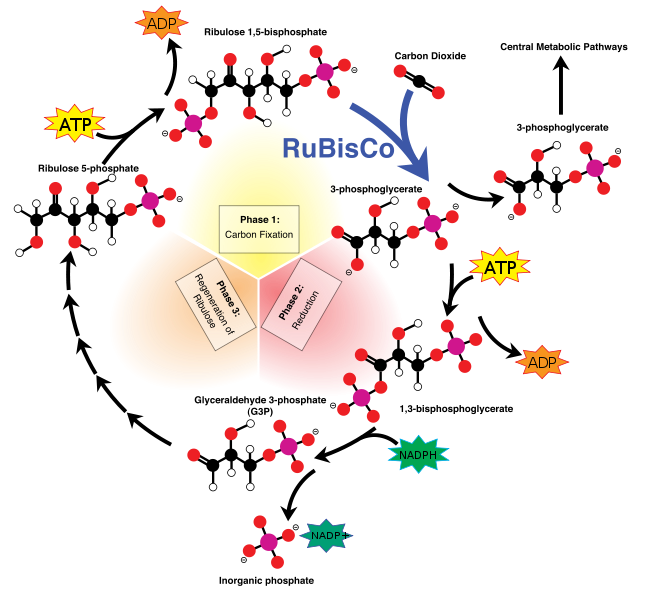-
 Crop
Crop
-
 Perching
Perching
-
 Elasticity
Elasticity
-
 Kinase
Kinase
-
 Thermostable
Thermostable
-
 Transmission line
Transmission line
-
 Comma
Comma
-
 Blue Car
Blue Car
-
 Internal energy
Internal energy
-
 Pneumatolytic
Pneumatolytic
-
 Shared resource radio network
Shared resource radio network
-
 Furo
Furo
-
 Heart
Heart
-
 HMAC
HMAC
-
 OFDM
OFDM
-
 African clawed frog
African clawed frog
-
 Common ash
Common ash
-
 Neoadjuvant
Neoadjuvant
-
 Alar
Alar
-
 Monophyletic
Monophyletic
-
 Papaya
Papaya
-
 Borage
Borage
-
 Crenocyte
Crenocyte
-
 Holohedry
Holohedry
-
 Eukaryote
Eukaryote
-
 Nephron
Nephron
-
 Interstellar cloud
Interstellar cloud
-
 Buddleja davidii
Buddleja davidii
-
 Endemic stick insect (apterograeffa reunionensis)
Endemic stick insect (apterograeffa reunionensis)
-
 Polygyny
Polygyny
Calvin cycle
The Calvin cycle is a series of biochemical reactions that take place in the chloroplasts of plants.
Role of the Calvin cycle
The Calvin cycle makes it possible to produce glucose, an energy molecule, from carbon dioxide. This is called carbon fixation.
Principle of the Calvin cycle
This biochemical cycle constitutes the second phase of photosynthesis: after photochemical reactions convert light energy into chemical energy, in the form of ATP and reducing potential, the Calvin cycle uses this energy to fix carbon in new organic molecules.
The three reactions in this cycle take place in the stroma of chloroplasts:
- fixation of carbon dioxide: incorporation of carbon from CO2 in the organic molecules that are already present through the key enzyme ribulose bisphosphate carboxylase/oxygenase ( RuBisCO). It fixes this carbon with three moles of glucide to five carbon atoms (the bisphosphate ribulose), producing 3 moles of an intermediary of six unstable carbons, which gives six moles of a three-carbon molecule (3-phosphoglyceric acid) ;
- reduction of the 3-phosphoglyceric acid: the energy of the ATP and the reducing potential is then used to form 6 moles of a glucide with three carbon atoms, glyceraldehyde-3-phosphate;
- regeneration of ribulose: one mole of glyceraldehyde-3-phosphate is exported for the plant's biosynthesis, while the five remaining moles are recycled into three moles of ribulose bisphosphate.
- The Calvin cycle can then begin again.
 Diagram of the Calvin cycle. © Mike Jones, Wikimedia CC by-sa 3.0
Diagram of the Calvin cycle. © Mike Jones, Wikimedia CC by-sa 3.0
Latest
Fill out my online form.



